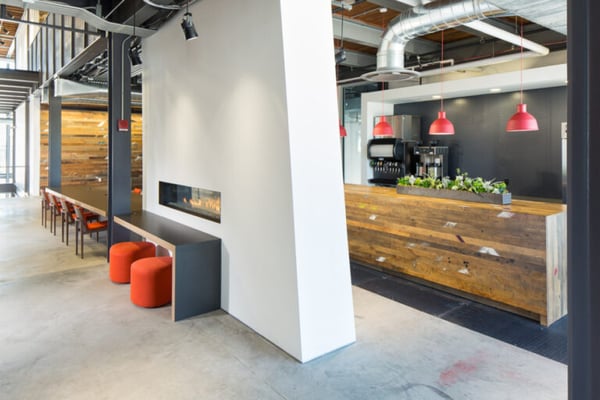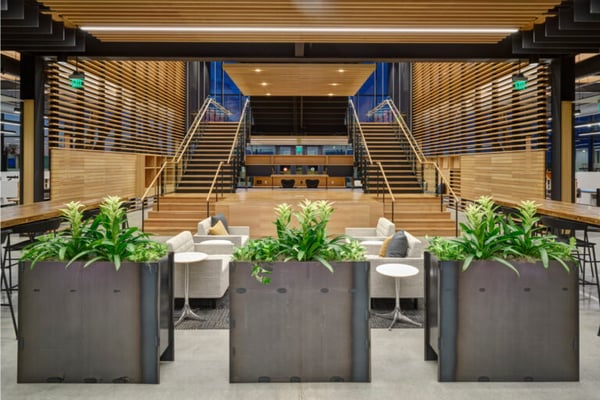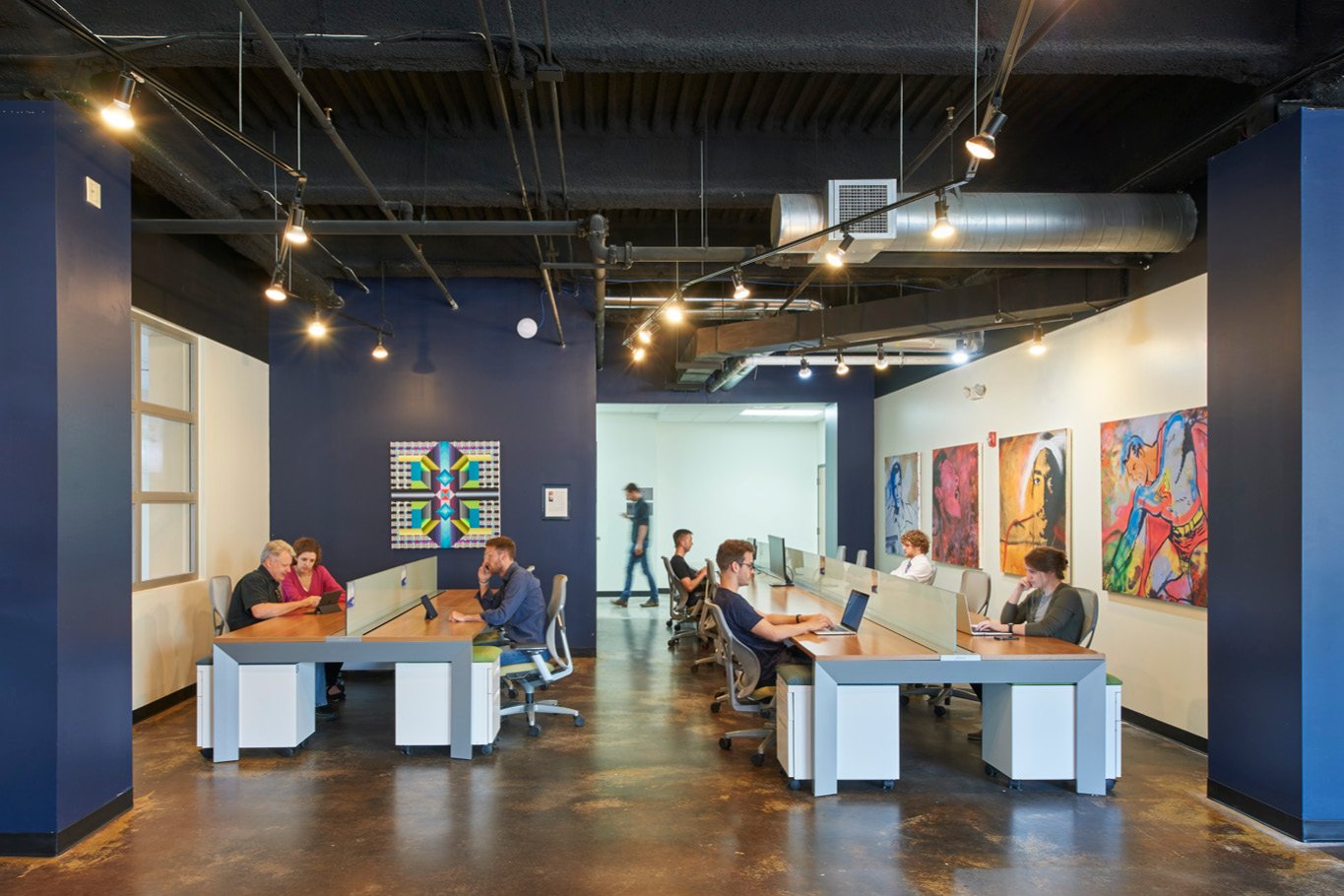The Covid-19 pandemic changed the way we work. When lockdowns went into effect in 2020, many organizations had to adjust to working remotely—a model that many came to embrace.
Despite the popularity of remote work, the office is here to stay. Although many jobs can be done virtually, the office provides a crucial opportunity to connect and collaborate. Today, many organizations are adopting a hybrid model where employees switch between working at home and in the office.
If your organization has embraced hybrid work, it may be time to update your existing office space. In this article, you will learn about five office design trends that will help your organization adjust to hybrid work and combat the challenges it presents.
5 Trends in Post-Pandemic Office Design
1. More Space for Collaboration
As many organizations adopt hybrid work models, rows of desks seem like wasted space. Instead of assigning everyone an individual desk, some organizations are exploring desk-sharing options where employees alternate days at the office.
Fewer desks allow for more collaborative spaces like conference rooms and lounges. Time at the office is becoming more intentional with employees coming in to collaborate with their team and host face-to-face meetings.
2. Emphasis on Community and Culture
Along with collaboration, many organizations are dedicating more space to community-building. During lockdowns, many organizations lost their sense of internal culture. Water cooler chats became non-existent, and happy hours were sequestered to video calls.
In the post-pandemic era, the office is becoming a place to rekindle that sense of community. Amenities like lounge seating, communal eating areas, and bar spaces are becoming increasingly popular.
In a hybrid work environment, your office is a place to connect with colleagues and experience the joy of serendipitous interaction.

Communal spaces are becoming more popular.
3. Focus on Acoustics
While a hybrid work environment offers many benefits, it also presents challenges for those at the office. Hybrid work leads to more video calls, which can be noisy and distracting. As such, acoustics are becoming one of the most important components of office design.
When it comes to acoustics, designers have several tools at their disposal. Separating spaces is perhaps the most effective way to reduce noise levels. Collaborative spaces and focus areas should be delineated.
Video conferencing rooms and focus rooms are becoming increasingly popular. These closed-off spaces allow individuals to escape the open office environment and work in a way that best suits their needs. You can either join a virtual meeting without the fear of distracting others or escape to make a dent in your to-do list.
Walls in these rooms should span to the floor deck to effectively block sound. Designers can also utilize acoustic ceiling panels in an open office to reduce noise travel. Adding a sound masking system is also an effective option.
4. Home-Like Environments
Even before the pandemic, the office was becoming more domestic. Many organizations began embracing biophilic design principles by incorporating indoor foliage and natural materials like wood. Biophilia makes the workplace more calming and welcoming and can even boost cognitive function and productivity.
In the post-pandemic area, organizations continue to embrace a home-like atmosphere. Designers are incorporating traditionally residential spaces like mudrooms into the workplace. As desks become smaller and desk-sharing options become more common, mudrooms provide a space for people to hang their coats, drop off their belongings, and change their shoes.
These features help create a cleaner and more comfortable environment, making the office a pleasant place to spend the day.

Biophilic design creates a home-like atmosphere.
5. Focus on Wellness
The stress of the pandemic made employee wellbeing a priority for many organizations. In the post-pandemic world, third-party rating systems like WELL are gaining popularity. By assessing performance outcomes of policy and design strategies, WELL aims to help organizations improve employee health.
Along with rating systems, many organizations are upgrading wellness rooms. Many offices featured wellness spaces before the pandemic. However, these spaces were often reserved for lactation or medical purposes.
In the post-pandemic world, the wellness room is becoming a space for prayer, yoga, and meditation, as well as a space where individuals can simply destress. Even in the most positive work environments, everyone needs a place to take a break.
Ready to Learn More?
The office is in a state of flux. Long gone are the days when employees sat at the same desk for 40 hours a week. Organizations are adopting hybrid work models, and the office is becoming a beacon for employees—a space where community and collaboration flourishes.
Embracing desk-sharing can create space for lounge seating and communal areas. Remember to balance these ideas with focus rooms, wellness rooms, and thoughtful acoustical design to give people choice and control over their workday.
Whether or not you are adopting a hybrid work model, it may be time to update your office. Learn more by reading about the signs you should update your workspace.
